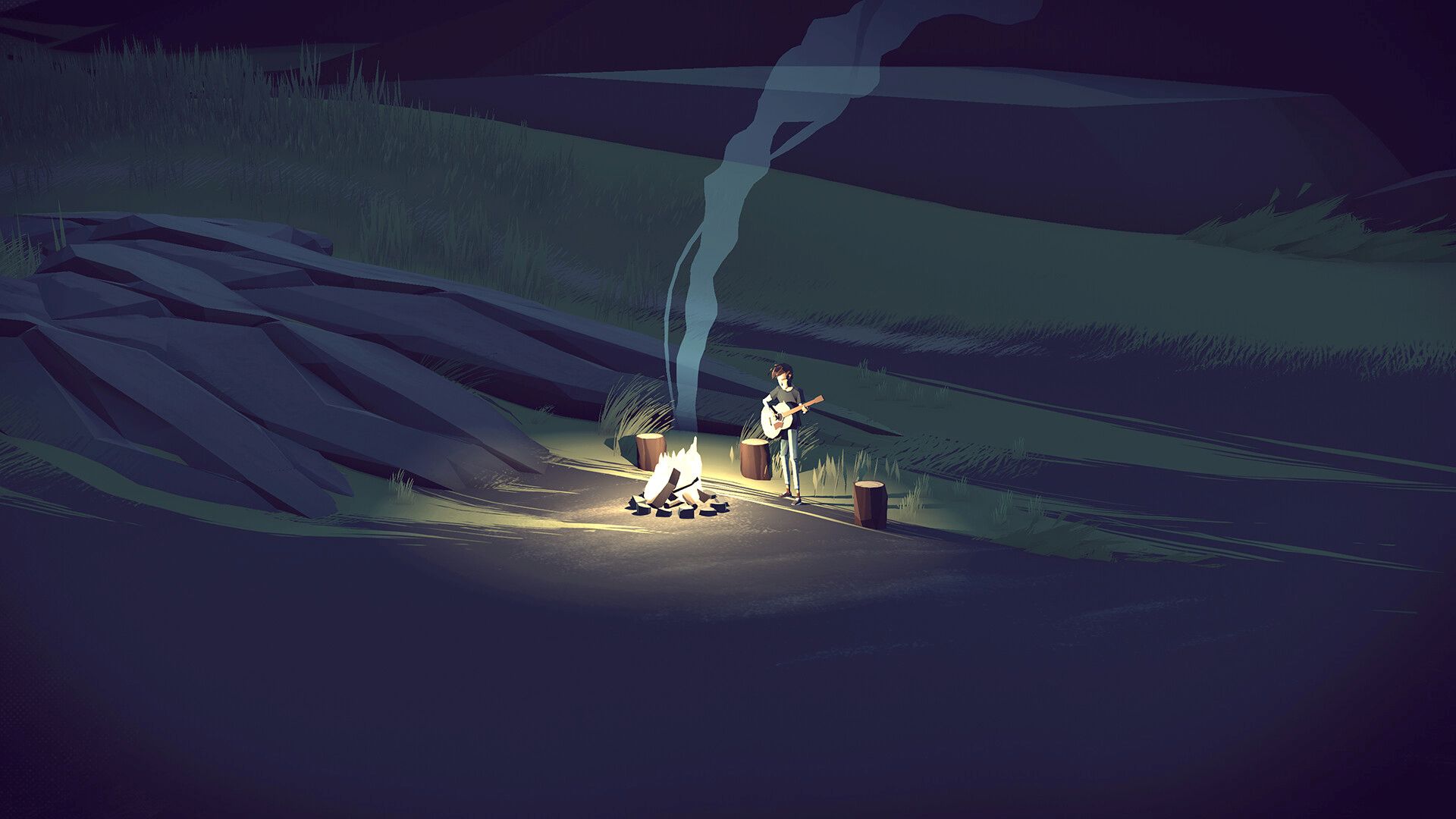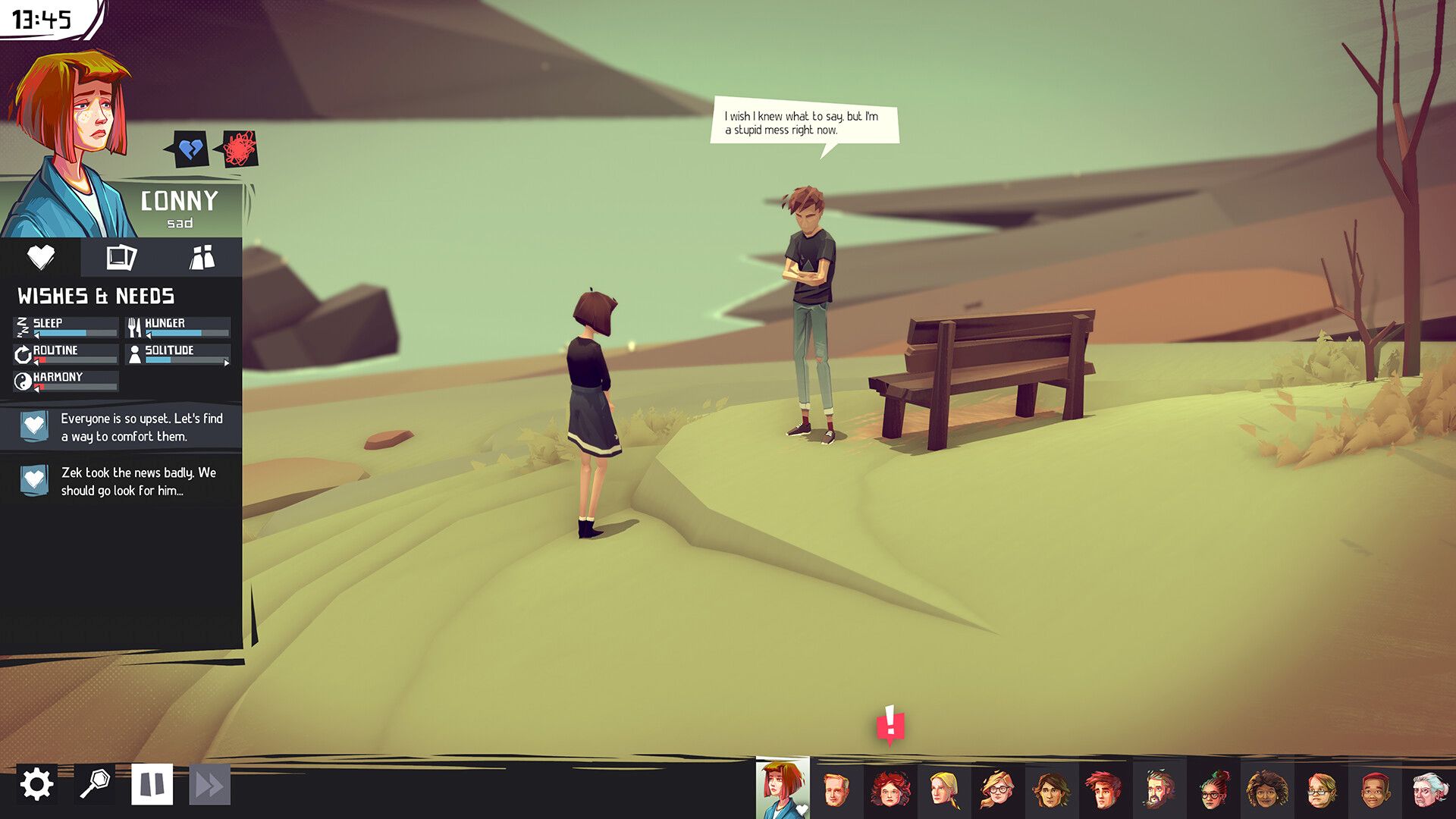Closer the Distance Review
It’s no bold revelation to state that video games are full of killing and death. For many action games, killing is the lazy mechanic for creating drama. Most gamers have sent tens of thousands of digital enemies to an early demise. Still, the reality of someone’s death and its impact on the people close to them is almost never explored in games. It’s a rare person who has never experienced the dizzying stages of grief and loss. For everyone else, Closer the Distance will be relatable, moving, at times harrowing, and ultimately comforting.
Can’t Get No Satisfaction
Closer the Distance is best described as The Sims meet the five stages of grief. Where The Sims is infused with a big heaping of silliness, Closer the Distance is fully grounded in the real emotional lives of its characters. Sure, there are some basic physical needs to satisfy but most of the game’s complexity comes from the more subtle needs like belonging, harmony, or routine. Forget trying to hook up or woo-hoo, these characters need to feel accomplished or maybe distracted.
Closer the Distance’s structure and gameplay beautifully expand from a simple beginning with a typical family in a little town. You start the game as Conny, younger sister to Angie. Conny is clearly the afterthought in the family, and her older sister is the star. Within the first ten minutes, tragedy strikes. Angie is killed in an accident. Some form of her — memory or spirit — talks to her sister. The family is in shock. Mom carries on making dinner, Dad’s a mess and Conny is starting to withdraw.

For a while, you control Conny as you would a character in the Sims, making choices in actions and dialogue as she reacts to people and situations. Your immediate task is getting her through the day as she tries to process what happened. It isn’t easy. What do you say to someone in that situation?
Spreading Out
The little town of Yesterby is one of those fictional conceits where everyone knows each other, and they’re all memorable characters in some way. As the news of Angie’s death spreads through the town, so does your ability to control others than Conny. The web of needs and relationships grows incredibly complex. Trying to prioritize the needs of one character means ignoring others. Their needs are rarely simple like Sleep or Hunger. Even when they are, sadness or agitation might get in the way.
Each character has four panels of different attributes, including things like relationships, history, wishes, and needs. Like the sims, each attribute has a bar to show how well the need is being met. But you realize early on that, like in real life, you simply can’t always comfort people or guide them successfully.
It’s a bit amazing that, given Closer the Distance’s abstract art style, each of Yesterby’s characters is recognizable. In large part, this comes from precisely observed details and animations. It took me a little while to really enjoy and appreciate the game’s art direction. But ultimately, it’s perfect.

Heavy Hitter
Where Closer the Distance is most remarkable is in its utterly realistic range of emotional responses to death, grief, and loss. Some people cling desperately to routines for comfort, while others spiral out of control. A few have healthy coping mechanisms, like exercise. No matter how you personally have dealt with grief, there’s likely a character or behavior you can relate to. Closer the Distance is obviously backed by considerable expertise and lived experience.
Playing the Sims is a free-form experience without an endgame. While Closer the Distance controls like the Sims, there’s a directed story arc, seemingly moving towards Angie’s funeral. But that isn’t truly the end, and what happens after is important.
The game’s voice acting and overall audio design are very good. Unfortunately, the quality of the writing is surprisingly inconsistent. Sometimes the dialogue was stilted or unrealistic enough to take me out of the situation. The inclusion of a folk singer to add narrative asides felt gimmicky and the small minigames seemed irrelevant and unnecessary.

Thanks to its art direction and genuinely creative use of Sims-like mechanics, Closer the Distance gets your attention. What keeps you enthralled, emotionally engaged, and frequently discomforted is its pitch-perfect exploration of some very difficult subject matter. It’s a heavy game but absolutely worth your time.
***PC code provided by the publisher for review***
The Good
- Complex characters
- Engaging mechanics
- Cathartic subject matter
The Bad
- Some stilted writing
- Triggering subject for some
- Art style is acquired taste

